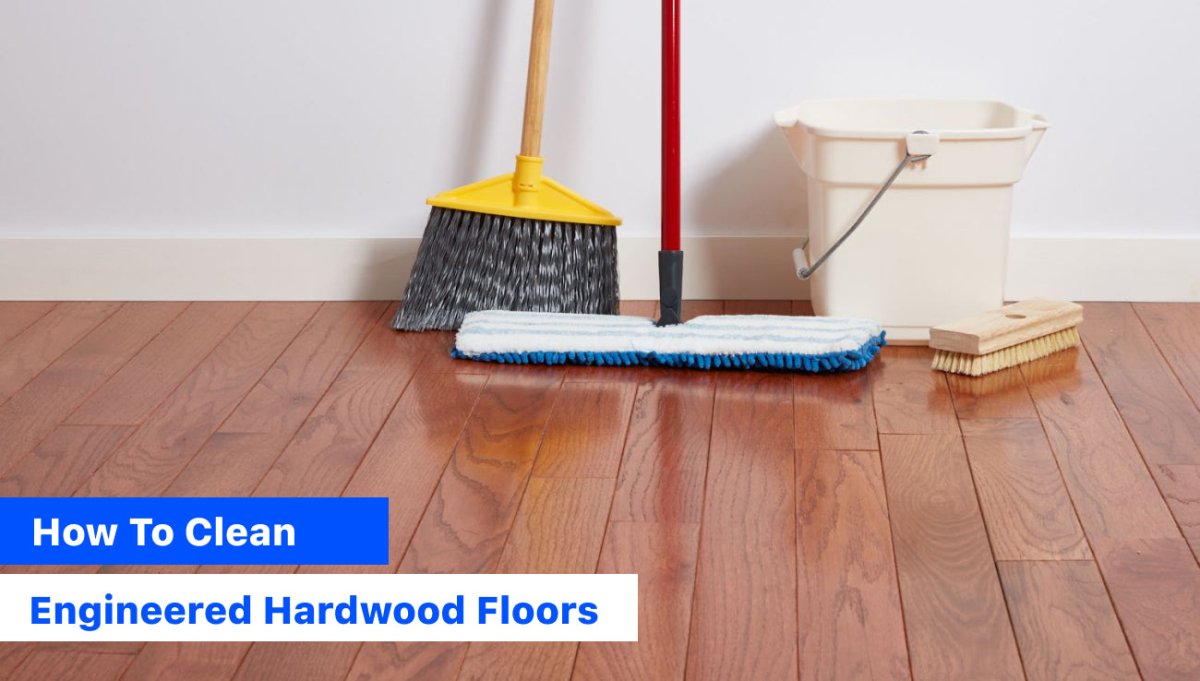You've made an excellent decision if you've decided to install engineered hardwood flooring in your house. It blends the extra durability that comes from its engineered design with the beauty of natural wood. It requires regular maintenance, though, to maintain its sheen and lengthen its life, just like any other valuable item. Let's go over ‘how to clean engineered hardwood floors,’ why cleaning it is so important, and some tips for doing it right without making typical mistakes.
What are Engineered Hardwood Floors?
Within the flooring industry, engineered hardwood floors are a wonder. Whereas conventional hardwood is cut straight from the tree and given a protective coating, engineered wood flooring is constructed using many layers. It has that timeless, coveted appearance since the top layer is made of real hardwood. Under that, you’ll find layers of other wood or materials pressed together. This structure not only makes engineered hardwood less prone to warping but also allows it to be installed in places where solid hardwood might not be the best fit, like basements or concrete slabs.
Why Is Cleaning Engineered Hardwood Important?
It's critical to maintain your engineered hardwood flooring's quality, usefulness, and aesthetic appeal over time. Grit and dust may dull and scrape the surface because they act like sandpaper. Moreover, unseen spills could pass between the gaps and force the wood to expand or advance its surface. Your flooring' structural integrity and visual attractiveness may be preserved for many years to come with regular cleaning, allowing you to continue using them for numerous years to come.
Common Mistakes To Avoid When Cleaning

A delicate touch and the appropriate tools are your greatest friends when it comes to cleaning engineered hardwood floors. The following are some typical traps to avoid:
1. Too Much Water:
Engineered flooring isn't necessarily watertight, even though it can withstand wet better than solid hardwood. Damage can be done if there is too much water seeping into the layers. When cleaning, always use a moist (not soaked) mop or towel.
2. Harsh Chemicals:
Floor finishes can be stripped off or even stained by aggressive chemical cleaners. Use moderate or pH-neutral detergents made especially for engineered wood floors.
3. Ignoring Spills:
Spills should be wiped up immediately. The longer a liquid sits, the higher the risk of it penetrating through the seams, potentially causing damage.
4. Skipping Sweeping:
Frequent sweeping or dry mopping can significantly reduce the grit that accumulates on your floors. It keeps them scratch-free. Consider using a microfiber mop or cloth, as it traps dust effectively.
5. Polishing or Waxing:
Some engineered hardwood floor treatments are not intended for polishing or waxing. Over time, these procedures may cause a buildup that can make your flooring appear lifeless. When using any product, make sure to always read the manufacturer's instructions.
The Right Way to Clean Engineered Hardwood Floors

1. Daily Dusting:
To remove dust and pet hair, use a gentle, microfiber mop. This keeps buildup at bay and preserves the new look of your flooring.
2. Weekly Vacuuming:
Use a soft-bristle vacuum attachment made specifically for hardwood floors. Remove any debris from between boards and in little awkward places.
3. Thorough Cleaning:
Use a damp mop and a hardwood floor cleaner once a month to give your hardwood floors a thorough cleaning. Squirt the mop pad with the cleaner to avoid overflowing the container onto the ground.
4. Spot Cleaning:
Immediately wipe up spills and spots with a clean cloth soaked in a small quantity of hardwood floor cleaner. For more difficult stains, especially if the stain has penetrated the surface, you might need to get professional help.
Only if you follow these tips will your engineered hardwood flooring look great and last a lot longer, making it a wise investment in your house's design and feel. If you have any questions regarding a specific product or procedure, it's also a good idea to consult the instructions provided by the flooring supplier.
Wrapping Up!
So, this was our guide on how to clean engineered hardwood floors. For more ideas and innovative solutions for your home, feel free to explore our extensive range of engineered wood flooring options at BuildMyPlace. Don't be afraid to speak with one of our professionals directly using our video call function if you need a more individualized touch. They are prepared and eager to help you realize your idea! Check out our Hardwood Vs Engineered Hardwood Flooring blog to know which flooring is great.
Frequently Asked Questions
Q. Can I use a steam mop on my engineered hardwood floors?A. Not recommended. The high heat and moisture levels in steam mop solutions can harm the wood layers and finish. Use a moist mop and an engineered wood cleaner only.
Q. How frequently do I need my engineered hardwood flooring to be cleaned?
A. The best way to get rid of surface clutter is to sweep or dust every day. Weekly deep cleaning may be accomplished with a vacuum and moist mop, but monthly deep cleaning with a wood floor cleaner is advised.
Q. Which cleaning solution is ideal for engineered hardwood floors?
A. Choose a moderate or pH-neutral detergent that is made especially for engineered hardwood. These cleaners work well without compromising the integrity or polish of the wood.
Q. Can I clean my engineered hardwood floors with vinegar?
A. Even though weak vinegar is sometimes promoted as a natural cleaning solution, over time its acidity can degrade the sheen of engineered hardwood. Utilizing materials suggested by the floor manufacturer or ones made especially for engineered wood flooring is safer.
Q. Is it alright to use mats or covers on engineered hardwood floors?
A. Indeed, mats and covers can be utilized, however pick ones with breathable, non-staining support. Avoid elastic or plastic mats as they can trap moisture and stain the wood. Likewise, it's smart to rotate carpets occasionally to allow the floor to age evenly.





